How to Tell if Your Computer Has a Virus?

In the digital age, your computer is not just a device; it’s an entrance to your personal and professional world. But just like any busy metropolis, this gateway can also be an upbringing ground for unwanted guests—computer viruses. These digital pathogens can silently penetrate your system, causing destruction without notice. Whether it’s a sudden slowdown, strange popup ads, or programs acting unpredictably, the signs can often be delicate yet alarming.
Understanding these signs is vital for the health and security of your digital life. In this guide, we’ll arm you with the knowledge to How to Tell if Your Computer Has a Virus, confirming you’re ready to take action and protect your cyber world.
The Importance of Cybersecurity
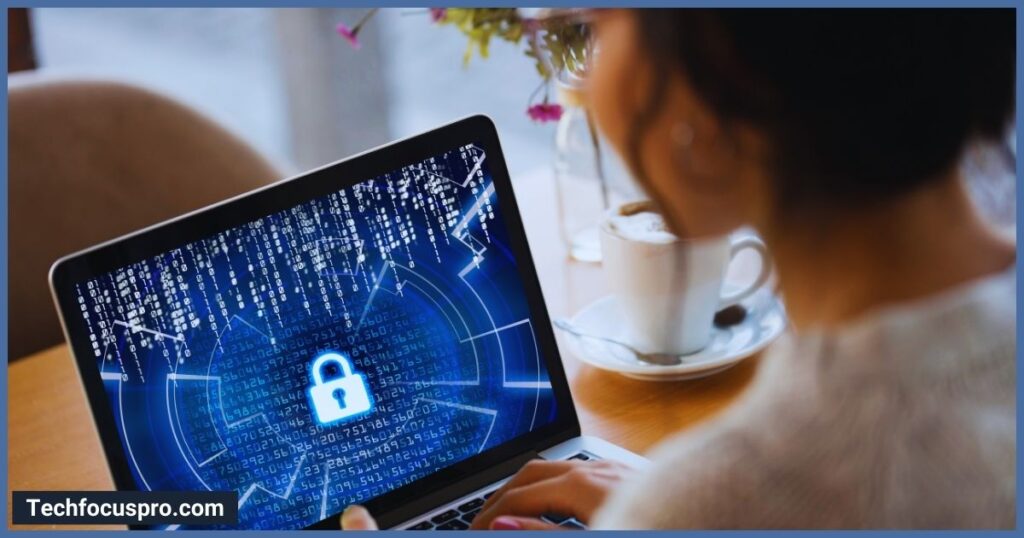
Cybersecurity is not just an option in today’s consistent world; it’s a necessity. The exponential growth of internet users has made digital places a popular target for cybercriminals, posing fears not only to individual users but also to companies and governments.
A robust cybersecurity outline protects against illegal access, data breaks, and other cyber attacks that can lead to critical financial losses, privacy attacks, and even a concession of national security. For individuals, cybersecurity confirms the honesty of personal information and safeguards against identity theft and phishing scams.
Relating to our main topic, “How to Tell if Your Computer Has a Virus,” understanding and applying vigorous cybersecurity measures are the first lines of defense in recognizing, preventing, and responding to malware penetrations. By staying informed about cybersecurity, users can identify the early signs of a computer virus and take practical steps to protect their digital footprint from malicious actors.
See Also: What is BBWC on my PC?
How to Tell if Your Computer Has a Virus – Common Signs
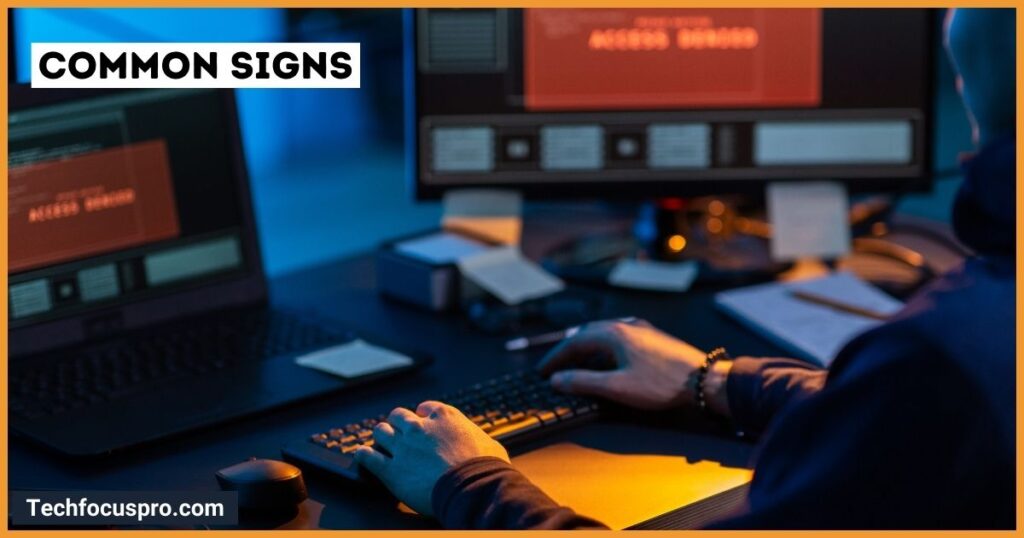
Detecting a computer virus early can save you from significant damage to your files, privacy, and the overall performance of your machine. Below are 10 common signs that may indicate your computer has been infected:
1. Slow Performance
If your computer starts to function more slowly than usual without any seeming reason, it could be a sign of a virus working in the background, consuming valued system resources.
2. Frequent Crashes or Reboots
Facing frequent system crashes or unanticipated reboots can signal that malicious software is interfering with your system’s normal processes.
3. Pop-Up Ads
An assault of unexpected popup ads, particularly those warning of a virus and influencing you to download something, is a classic sign of adware, a type of Virus.
4. Disabled Security Software
Finding your antivirus software disabled without your consent is a big red flag. Some viruses can disable or bypass security software to avoid detection.
5. Unusual Hard Drive Activity
Witnessing constant challenging drive activity, even when you’re not running any programs, suggests that a virus might be active in the background.
6. Ransomware Messages
Receiving messages that your files have been encrypted and demanding a ransom for release is a clear sign of a ransomware infection.
7. Unfamiliar Programs on Startup
Noticing unfamiliar programs that start automatically when you boot up your computer can indicate that unwanted software has been installed.
8. Unauthorized User Accounts
Discovering new, unauthorized user accounts on your system might mean a hacker has gained access through a virus.
9. Changes to Home Page or Search Engine
If your web browser’s home page or default search engine changes without your input, it’s likely due to a browser hijacker virus.
10. Missing Files
Finding files that suddenly vanish or get moved without any action on your part might advise that a virus is operating or deleting your data.
Awareness of these signs and acting promptly can save you from data loss, privacy breaks, and other compensations. If you notice any of these issues, it’s vital to run a complete system antivirus scan and seek professional help if essential.
See Also: How to Clean Dust from PC Without Compressed Air?
How can you detect a computer virus?
Steps to Verify Running a Full System Scan
Directing a full system scan using trustworthy antivirus software is a severe step in identifying and eliminating potential viruses from your computer. Follow these basic steps to confirm you’re efficiently scanning your system:
Using Antivirus Software to Detect and Remove Viruses
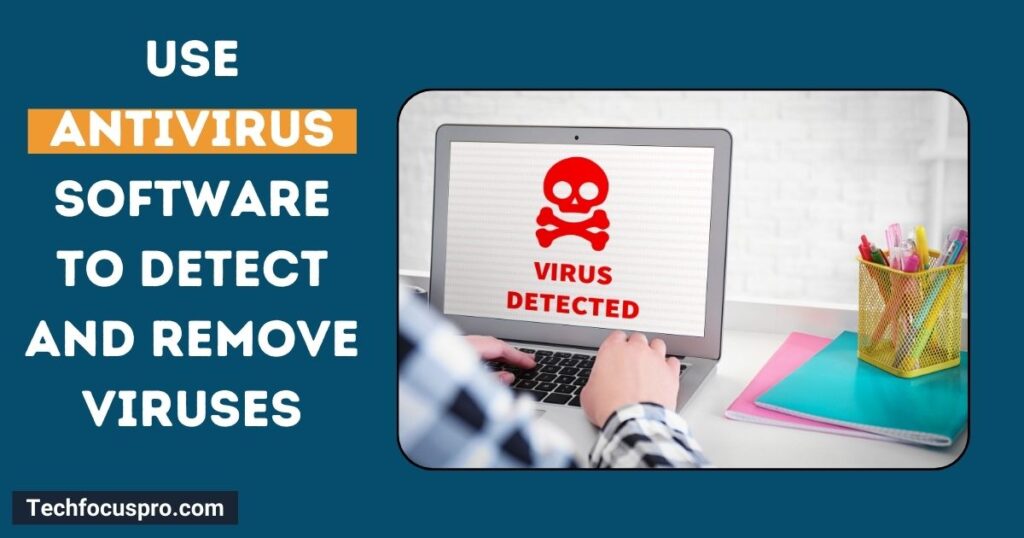
- Choose a Reputable Antivirus Program: If you haven’t already, select and install essential antivirus software. Consider options from well-known and appreciated cybersecurity firms.
- Update Your Antivirus Software: Before running the scan, ensure your antivirus software is updated to the latest version. This confirms it knows the newest viruses and malware.
- Run a Full System Scan: pick the ‘Full System Scan’ option within your antivirus program. This may take longer than a quick scan, but it widely checks your whole system—including files, programs, and system memory—for malware.
- Review the Results: After the scan is completed, review the results. The software lists noticed fears and suggests confinement, deletion, or repair for infected files.
- Take Recommended Actions: Follow the software’s approvals to deal with the detected threats. This may involve removing viruses or repairing corrupted files.
- Rescan if Necessary: If the infection is severe, consider running another full scan to confirm all threats have been removed.
Checking System Logs for Unauthorized Access or Operations
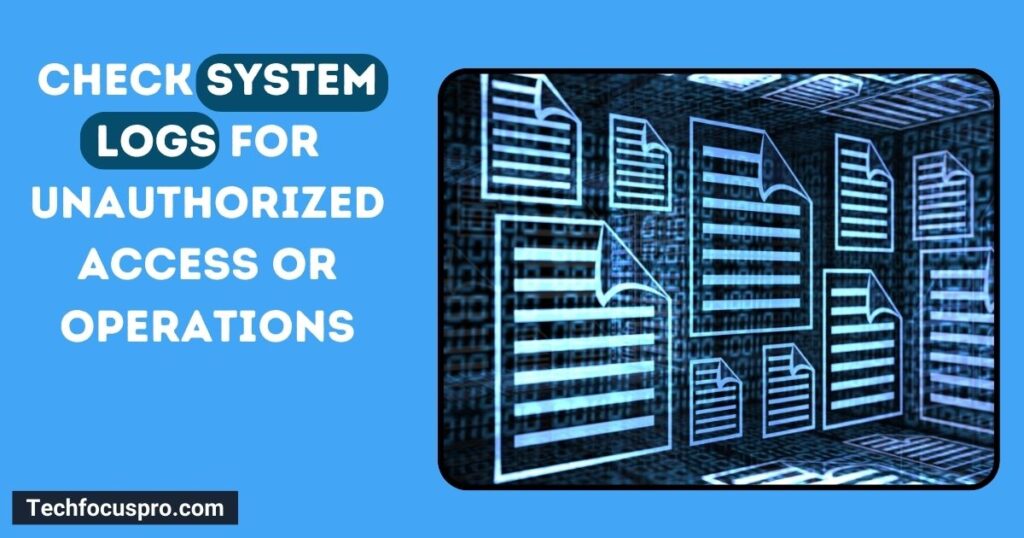
- Access System Logs: On utmost computers, you can view system logs over the operating system’s event viewer. For Windows, this is retrieved by searching for ‘Event Viewer.’ On Macs, look for ‘Console’ in the Values folder.
- Review Security Logs: Focus on security-related logs. Look for signs of illegal access or operations, such as failed login attempts, unpredicted software installations, or changes to system settings.
- Identify Suspicious Activity: Note any activity that happened without your knowledge or harmony. Repeated failed attempts to access specific files or services can be a red flag.
- Cross-Reference with Antivirus Findings: Compare your findings with the results of your antivirus scan. Similar events can help identify how a virus or malware might have arrived at your system.
- Take Preventative Measures: Based on your analysis, take steps to fortify your computer’s security, such as changing passwords, updating software, and regularly scanning for viruses.
By accurately following these steps, you’ll be more fortified to detect and remove viruses from your computer, safeguarding your personal information and confirming your system’s best performance.
How to remove computer viruses?
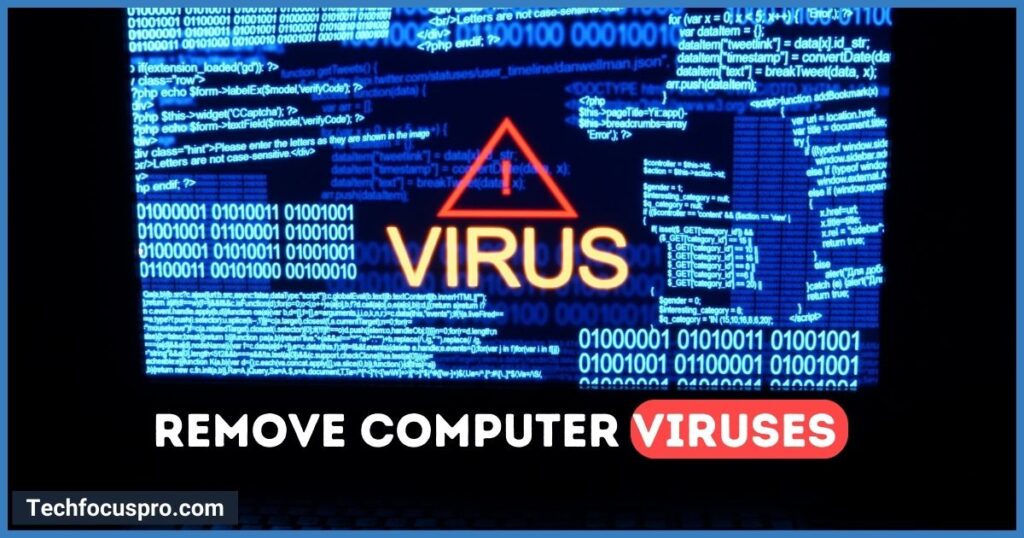
While detecting and removing viruses is serious, stopping them from contaminating your computer in the first place is equally important. Applying strong prevention measures can significantly decrease the risk of virus infections. Here are some critical steps to improve your computer’s security and safeguard your data:
Regular Updates
Keeping your software and working systems up to date is one of the most effective strategies for stopping virus infections. Software designers regularly release updates that fix susceptibilities and security gaps. Ensure automatic updates are allowed for your operating system and any installed software, particularly your web browser and security tools.
Safe Browsing Habits
Safe browsing habits prevent viruses and other malware from infiltrating your system. Avoid clicking on doubtful links, especially those in unwelcome emails or messages. Be careful when downloading files or apps from the internet, and avoid visiting websites that seem unlikely or are known for hosting malware.
Using Reputable Security Software
Investing in trustworthy antivirus and anti-malware software is essential to any computer security plan. These programs offer real-time protection against threats, scan for existing infections, and help remove any malicious software found. Check your security software is always up to date, and run regular full system scans as part of your routine.
By following these preventive measures, you can significantly lower your chances of falling due to viruses and other types of malware, confirming your computer ruins your health and your data stays safe.
FAQs
How to remove a computer virus?
Removing a computer virus includes numerous steps. First, enter your computer in Safe Mode to stop the Virus from causing more damage. Next, delete any temporary files to eliminate part of the Virus. Use your antivirus software to run a detailed system scan; this should detect and detach any malicious files. Follow the software’s instructions to remove the Virus, which may contain deleting or isolating the infected files.
Can regularly restarting my computer help prevent viruses?
Restarting your computer can help resolve many performance issues but doesn’t stop viruses. Actual virus prevention requires using updated antivirus software, working safe browsing habits, and remaining attentive to the signs of infection.
How often should I update my antivirus software?
It’s suggested that you set your antivirus software to update automatically. This confirms it’s always prepared with the latest virus definitions and can protect against new threats as they arise.
Can a virus ultimately damage my computer’s hardware?
While most viruses are intended to cause software-related issues, such as data theft or corruption, some can also lead to hardware problems. For example, a virus can overburden your computer’s components, potentially leading to overheating and physical damage.
Is using my computer for banking and shopping safe if I suspect it has a virus?
No, it’s not safe. If your computer is infected, penetrating information such as passwords and credit card numbers can be concealed. Confirm that your system is virus-free before engaging in any online financial dealings.
How can I tell if an antivirus alert is real or a scam?
Genuine antivirus alerts will be shown through the software’s application interface, not a web browser. Be cautious of alerts in your browser, mainly if they instruct you to download software or offer personal information—they’re likely scams.
Conclusion
In conclusion, identifying the signs of a computer virus is the first step to safeguarding your digital life. Signs such as slow system performance, frequent crashes, unknown programs at startup, and unexpected popup ads are clear pointers of potential infections. By remaining alert to these signs and acting quickly, you can prevent the significant penalties that viruses pose to your privacy and data honesty.
Equally important is the promise to maintain observance and adopt complex preventive measures. Confirm your software and operating systems are always up to date, practice safe browsing habits, and invest in trustworthy security software. Incorporating these practices into your daily digital routine fortifies your defenses against online threats. Remember, vigilance and proactive prevention are your best allies in keeping your computer virus-free and operating effortlessly.






